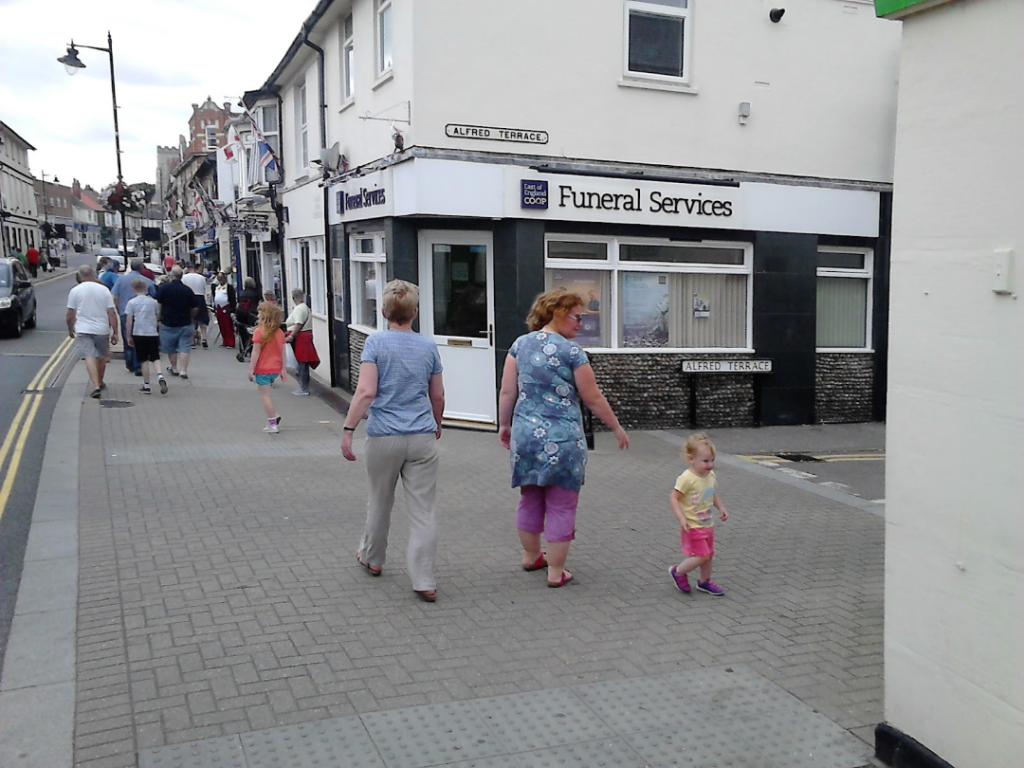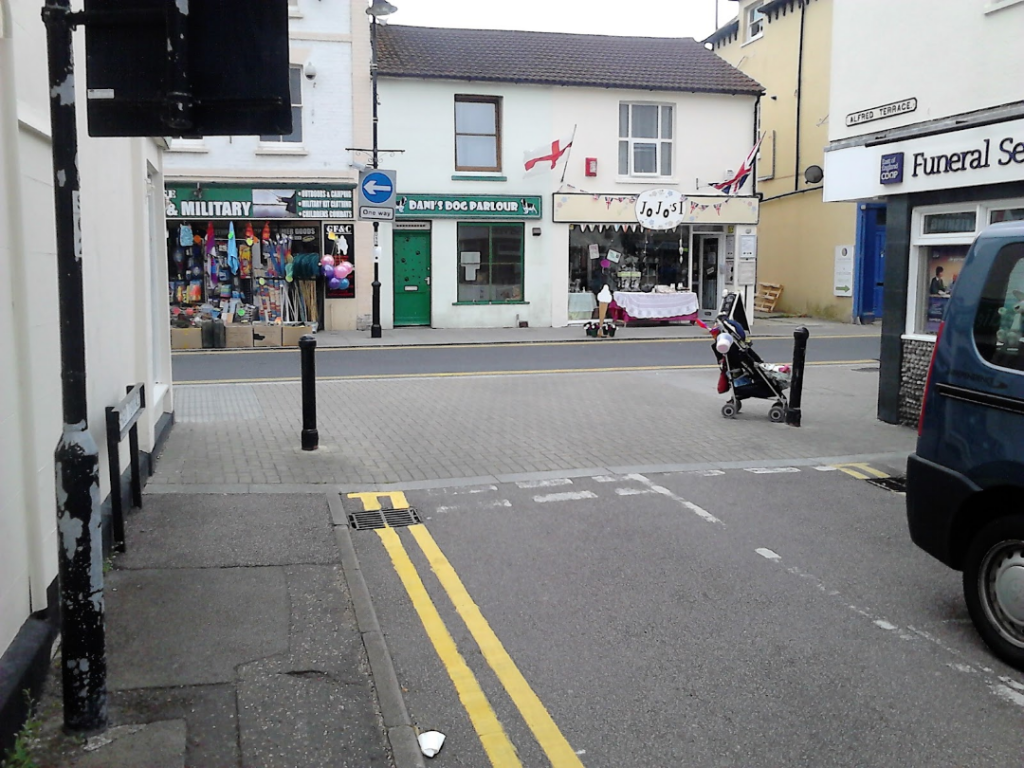The Government recently sent out a call for evidence to its Cycling and Walking Investment Strategy Safety Review. The forum sent the following response. Thanks to Francis Vernon for compiling this response on behalf of the forum.
In general we support the responses to the safety review from both Cycling UK (“Cycle Safety: Make it Simple”) and the Road Danger Reduction Forum (RDRF).
Consultation question 1
Do you have any suggestions on the way in which the current approach to development and maintenance of road signs and infrastructure impacts the safety of cyclists and other vulnerable road users? How could it be improved?
The most important change that needs to be made to improve safety is to design our streets for the comfort and safety of people of all ages, rather than giving priority to the speed and ease of vehicle movements.
For the past 50 years the approach to development and maintenance of road signs and infrastructure has been primarily focussed on reducing congestion caused by the increase in motor vehicles, and making travel by vehicles quicker and more attractive.
The volume and speeds of vehicles on the roads, the design of the road infrastructure and the general ease of travel by car have all led to the numbers of people riding bikes (in most parts of the country) changing little over the past few decades. One key reason given by people for not travelling by bike is the perception of risk it involves. There has also been an increase in the numbers of people walking or on bikes who have been killed or seriously injured in recent years.
The following points are important:
1. There need to be networks of cycle routes across the country, taking people where they want to go.
2. These networks need to have the following characteristics:
- Physically protected cycle tracks alongside faster and/or busier main roads.
- Lightly-trafficked low-speed streets or lanes, where through traffic is removed as far as possible, and which are designed to feel like community streets, with low speed limits.
- Routes entirely free of motor vehicles which are integrated with a wider cycle network to meet people’s day-to-day journey needs.
3. The majority of collisions between car drivers and people on bikes occur at side road junctions and roundabouts, so their design must take this into account.
4. Continuous footways should be the norm for side-road junctions. These give priority to pedestrians and bikes and have been shown to reduce collision rates. Here is a good example from Walton-on-the-Naze: traffic can cross this junction, but the clear visual priority is for pedestrians.
5. Consistent design guidance for planners and highway engineers is crucial. The lack of this has led to piecemeal development of cycling infrastructure in some places, with many examples where the changes designed are of poor quality and at times dangerous for people on bikes.
We support Cycling UK’s call for a single consistent source of cycle-friendly design guidance covering specific provision for cycling.
6. Highway maintenance – potholes and poor road surface conditions cause frequent injuries to people on bikes and walking. Highways authorities must be required to maintain areas where people ride and walk to a high standard. This includes:
- The full width of the road (often the edges are excluded in resurfacing work).
- Pavements.
- Cycle tracks.
7. Central government must take the lead in delivering cycling infrastructure because:
- Individuals, groups and charities can’t
- Developers won’t – they just provide the minimum they can get away with and councils cannot refuse on planning grounds unless the result is so far below an acceptable standard that it constitutes a ‘severe residual impact’
- Councils will not unless it is mandatory – they lack the in-house expertise, consistent national guidance and funding
Consultation question 2
Please set out any areas where you consider the laws or rules relating to road
safety and their enforcement, with particular reference to cyclists and pedestrians,
could be used to support the Government’s aim of improving cycling and walking
safety whilst promoting more active travel.
Focus on the *source of the danger* – motor vehicles
Increased road traffic enforcement:
- Increased use of speed cameras
- Average speed cameras –on main roads and for lower speed roads including urban networks
- All police forces to make use of third party video for prosecutions
- Use hidden speed cameras
- All police forces to roll out Operation Close Pass (as per WM Traffic Police)
- Reverse cuts in specialist road traffic officers
Ensure police, magistrates and judges have proper training and knowledge about appropriate, safe driving around cycles. There have been too many failures of justice because of ignorance, e. g. drivers being found not guilty because ‘the sun was in their eyes’ or failure to understand the danger of close passing as in this video:
Tougher sanctions and increased enforcement against use of mobile phones while driving – with the emphasis on driving bans. Use of a mobile phone while driving should be classed as ‘dangerous’. More public awareness campaigns so that using a mobile becomes as socially unacceptable as drink driving
Match the severity of the charge more closely to the culpability of the driver than to the severity of the outcome ie if a driver has a minor lapse of concentration that the charge should reflect that, even if a death results, but if a driver makes a deliberate choice to drive aggressively or recklessly, that should be treated more severely, even if no injuries result.
Driving bans to be more widely used and to be for longer periods.
Implement ‘Turning the Corner’ (British Cycling Campaign) so turning traffic must give way to straight on movements including by pedestrians and cyclists –as is common and effective elsewhere. This will make it easier to implement safe protected cycle infrastructure as well as directly helping people walking and cycling by giving them priority.
Move towards no on-street parking in urban areas except in designated bays (including for disabled drivers) rather than relying on increased numbers of double yellow lines.
Make pavement parking illegal and enforceable by both police and local authorities.
Reduce the national speed limit in line with Vision Zero principles ie lower speed for single carriageway roads and lower again for lanes.
20mph default speed limit in built-up areas
Rewrite Highway Code sections on cyclists, especially:
- Safe passing distance for overtaking cyclists – to emphasise the need for more space.
- Two-abreast cycling and primary position – to permit it (cyclists to be considerate and, where safe, let vehicles to overtake rather than create excessive hold-ups).
- References to helmets and hi visibility – to indicate that these are a matter of individual choice of cyclists and drivers need to travel at a speed where they can spot and safely pass cyclists/pedestrians regardless of the clothing they are wearing.
- Involve cycling groups in the re-writing process.
Consultation question 3
Do you have any suggestions for improving the way road users are trained, with
specific consideration to protecting cyclists and pedestrians?
Cycle training and awareness for drivers:
- Learner drivers to take Bikeability 3 before taking their driving test.
- Enhanced hazard awareness test to include cycles (eg checking for cycles as driver turns onto main road, overtaking cycles giving enough space/holding back from overtakes if another car is coming in opposite direction)
- Driving test to be extended, e.g. the current test to be followed within a year by a second, longer test including night driving and 70mph roads.
- Enhanced training and testing of driving instructors on teaching learners how to drive safely around cyclists. More emphasis on driving to the conditions rather than to the speed limit. Too many driving instructors are failing to prevent or actively encouraging driving which puts cyclists at risk eg through close passing, approaching blind corners too fast, failing to lookout adequately in darkness, rain etc. This thread gives examples: https://twitter.com/CSkinner/status/1001888009514516481
- Regular retests required for all drivers – charges to make this self-financing.
Consultation question 4
Do you have any suggestions on how we can improve road user education to help
support more and safer walking and cycling?
Information videos and training on the dangers of being hit/trapped when large vehicles turn. This could be provided to school children around the time they do Bikeability 2 and, again, for secondary/sixth form students and new drivers.
Switch funding away from videos/literature about ‘cycle safely’ and towards ‘drive safely around cycles’. Road user education should stress the disbenefits of driving to the community:
- Ill health due to inactive travel
- Pollution
- Environmental damage of road building
- Community severance
- Cost due to the non-payment of external costs
This would emphasise the relative desirability of walking or cycling to driving.
Consultation question 5
Do you have any suggestions on how Government policy on vehicles and
equipment could improve safety of cyclists and pedestrians, whilst continuing to
promote more walking and cycling?
- Require vehicles to be fitted with ‘tachographs’ so that there is a record of driver behaviour which is available to police in the event of any collision etc.
- Require vehicles to be fitted with technology which warns the driver when the local speed limit is exceeded.
- Require new vehicles to be fitted with technology which prevents them from exceeding the local speed limit.
- Automatic braking and recognition and visual warnings of cycles in all new vehicles.
- Introduce tight restrictions on built-in screens in car cockpits to prevent driver distraction.
- Encourage local authorities to put tighter limits on vehicle sizes in residential and town centre streets. Incentivise the use of cargo cycles for ‘last mile’ deliveries.
- Provide subsidies and more flexible extended ‘cycle to work’-type schemes for ebikes and cargo bikes.



Speak Your Mind